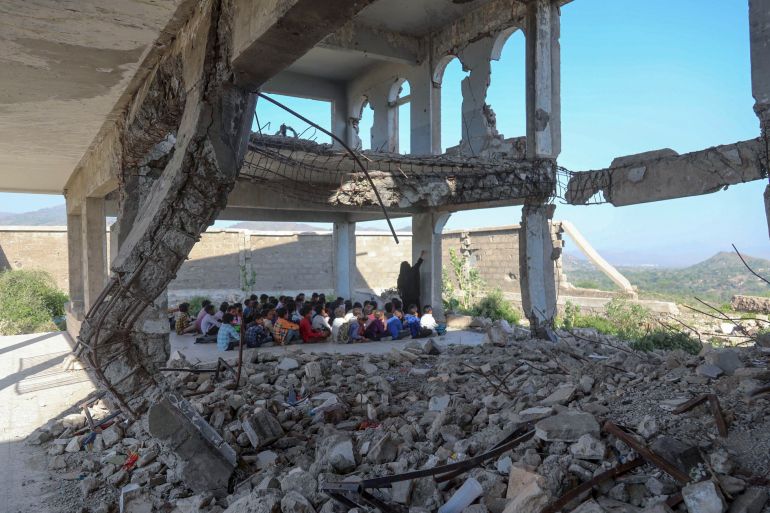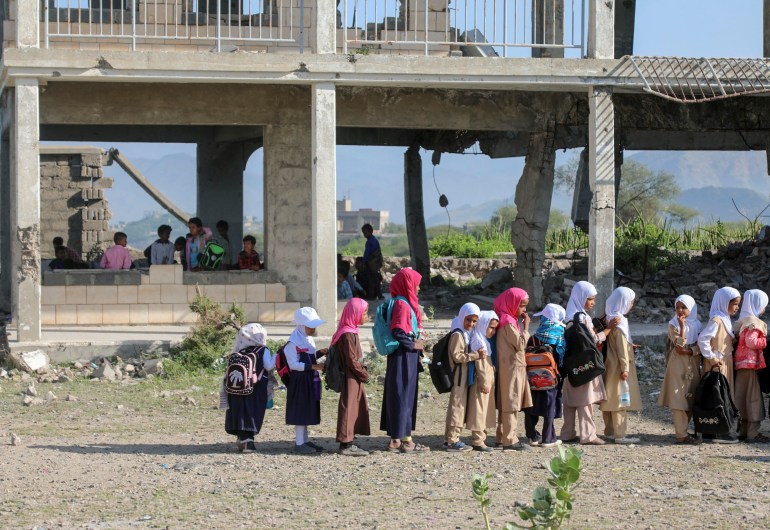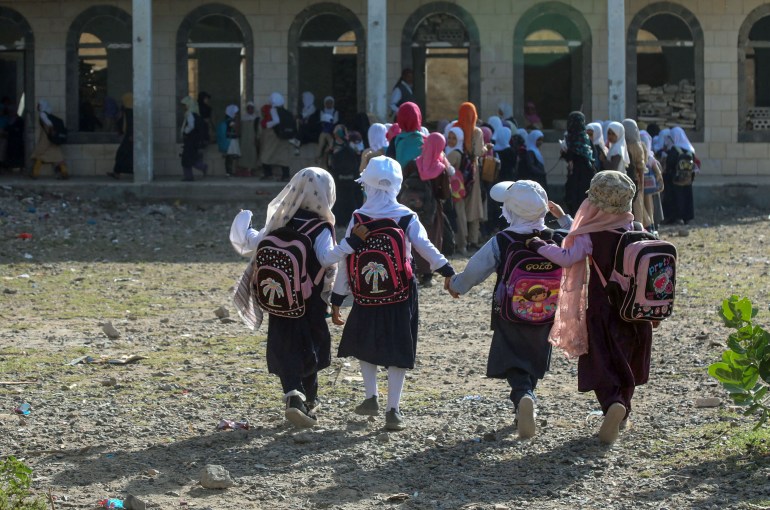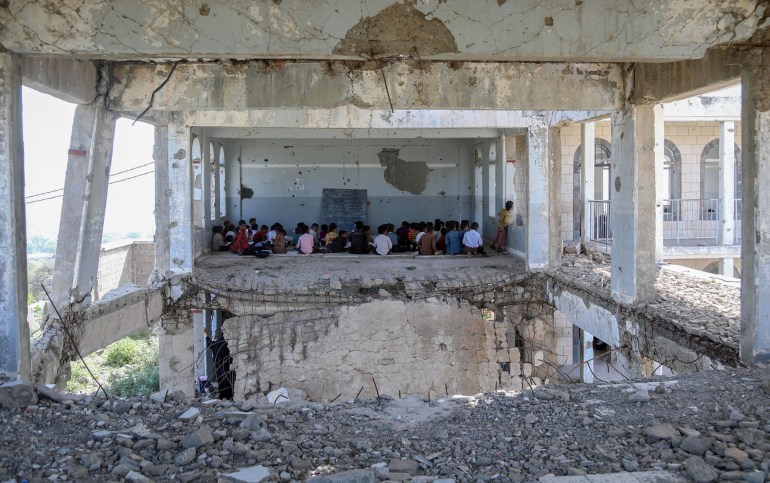In war-torn Yemen, a bombed school brings back hope to children
A school in Taiz has opened doors for children in a country where millions of children cannot access education.

With its walls pounded by artillery, roofs torn open and concrete beams in shreds, Al-Wehdah school lies in ruins as students return for the first day of Yemen’s school year.
At the school near Taiz, the third-biggest city in a country shattered by years of war between the government and Houthi rebels, there are no doors or windows, let alone desks.
Instead, the students use old exercise books to jot down their lessons, as they sit in makeshift classrooms with a handful of teachers brave enough to join them under crumbling ceilings.
Yet in a country where nearly a third of children do not go to school at all, these are the lucky ones.
Al-Wehdah school was hit in a 2016 air attack.
Ali Sultan, a parent of one of the students, points out to AFP news agency a warning sign in red letters written on a perimeter wall.
“Beware of Mines,” it reads.
The school is located in the middle of a minefield, that was partially cleared to allow the students to return.

“We were faced with a difficult choice, either leave them at home or face the risk of bringing them here to study in this rubble,” Sultan said.
Children first returned to the school the year after the attack.
“We have been through very difficult times,” Sultan said, referring to the fighting in the southwest city, which is held by government forces but besieged by Houthi fighters.
In Taiz city alone, 47 schools were “totally destroyed in the fighting”, said Abdel Wassae Chaddad, provincial director of education.
“As far as destruction is concerned, we got the lion’s share,” he said.
Chaddad said he was forced to close those schools and tell students to go to any other that could accommodate them – even if they were also in poor shape.
Some children have to walk long distances to get there.
Lost generation
In Jamila al-Wafi’s classroom, instead of a blackboard, she writes out the day’s lessons in pencil on a supporting beam.
The students, seated on the floor, follow her attentively. They make notes carefully in their exercise books.
Once the lesson is over, they slide down a collapsed roof that serves as a staircase from the classroom down to the ground floor.

“We have 500 students,” said Wafi, dressed in black and with her face covered, pointing to the neatly presented boys and girls, who study in separate classrooms.
“We call on the whole world and the business community to save the school,” she said. “It could collapse at any moment.”
In the courtyard, the children do some light exercises to start the day, and then queue up quietly waiting for classes to begin.
Two million of Yemen’s seven million school-age children do not get to go to school at all, according to the United Nations.
More than 2,500 schools have been put out of commission.
Two-thirds have been damaged in attacks, while others are used by the army as shelters for people forced from their home by the fighting, or simply closed in a country with few resources.
The conflict pits the Houthi rebels, who are linked to Iran, against a government which is militarily backed by a Saudi Arabia-led coalition.
The Houthis took control of the capital Sanaa and much of the country’s north in late 2014. The move prompted Saudi Arabia to launch a devastating military offensive in March 2015 that has left tens of thousands dead and millions displaced in the Middle East’s poorest country.

The war has killed tens of thousands of people, mostly civilians, and resulted in what the UN has described as the world’s worst humanitarian crisis.
Some 3.3 million people have been displaced from their homes and 24 million, or more than 80 percent of the population, are in need of aid, according to the UN.
For the teachers and students of Al-Wehdah School, the alternatives are very limited, Wafi said.
“We will continue the work, despite the great danger, if we can prevent a lost generation of students who lack education,” she said.